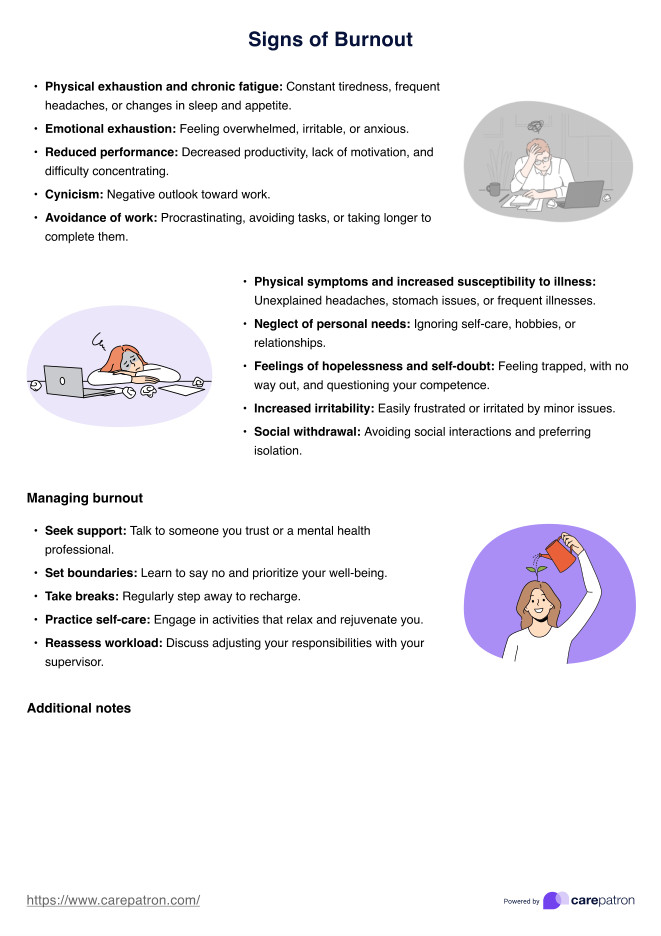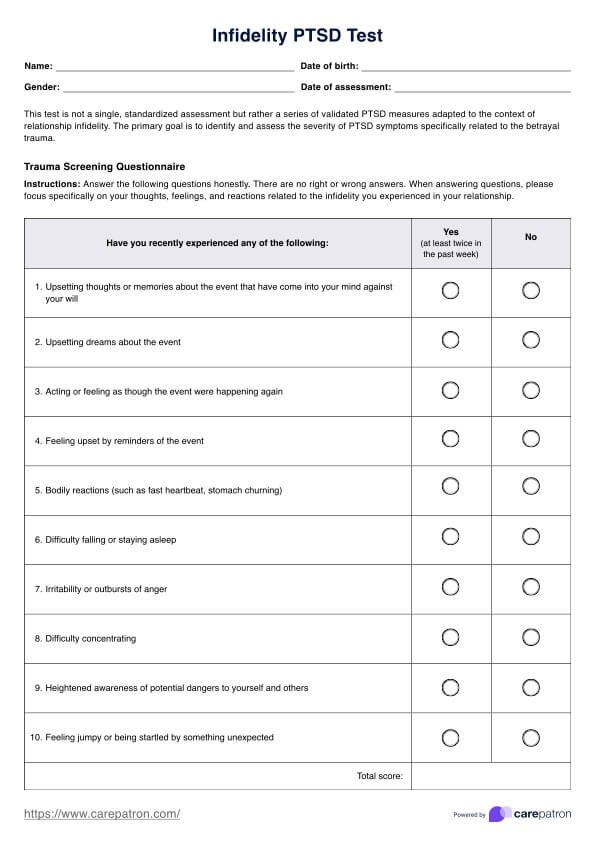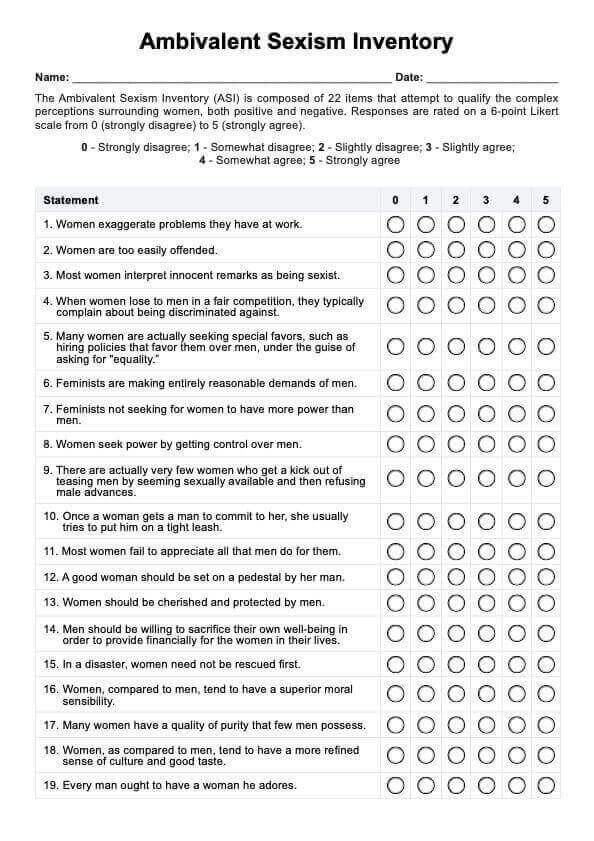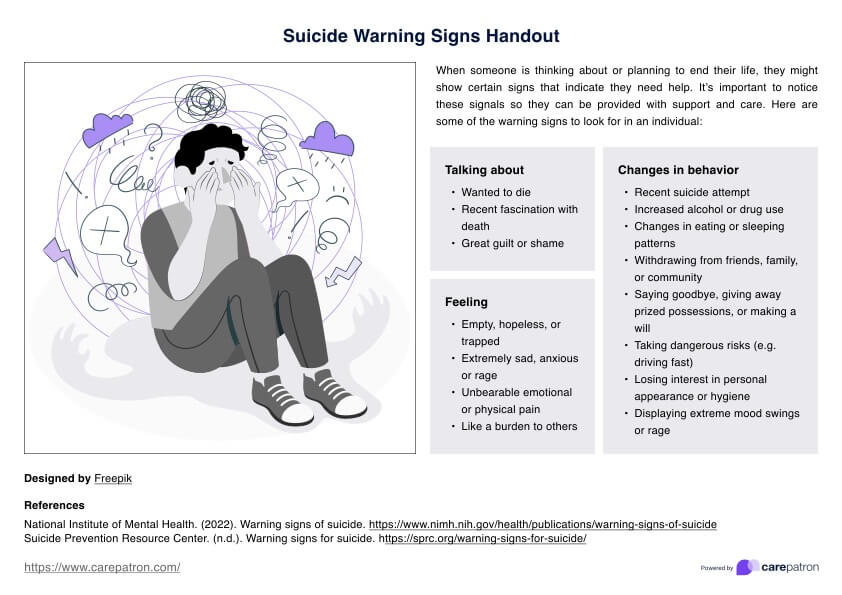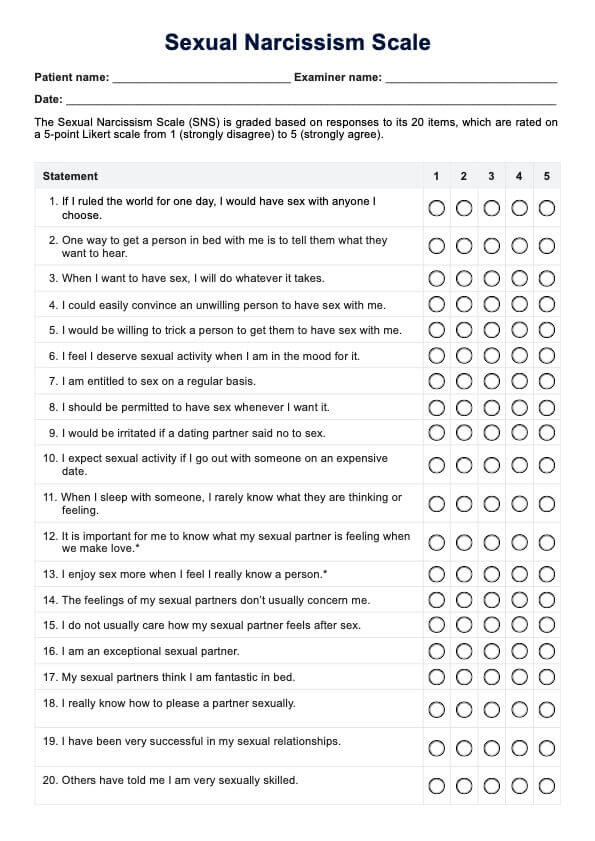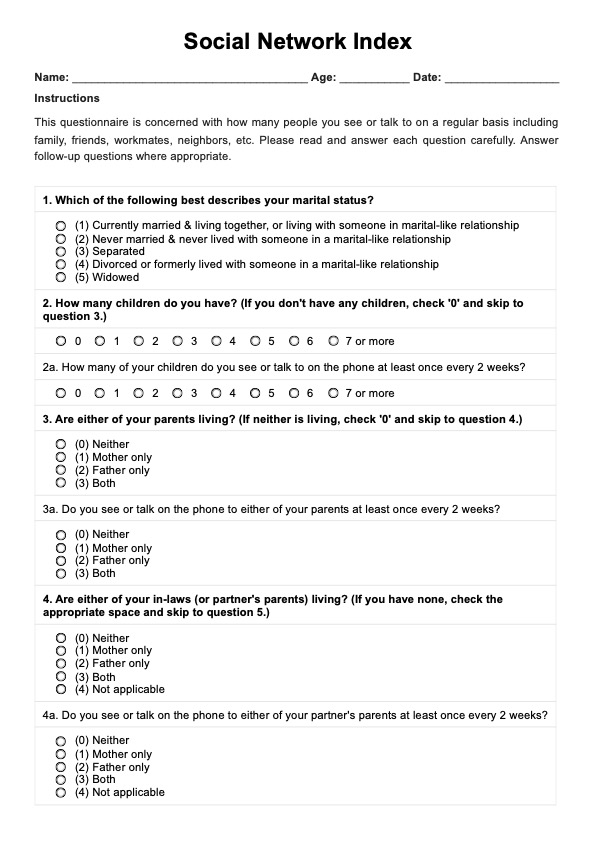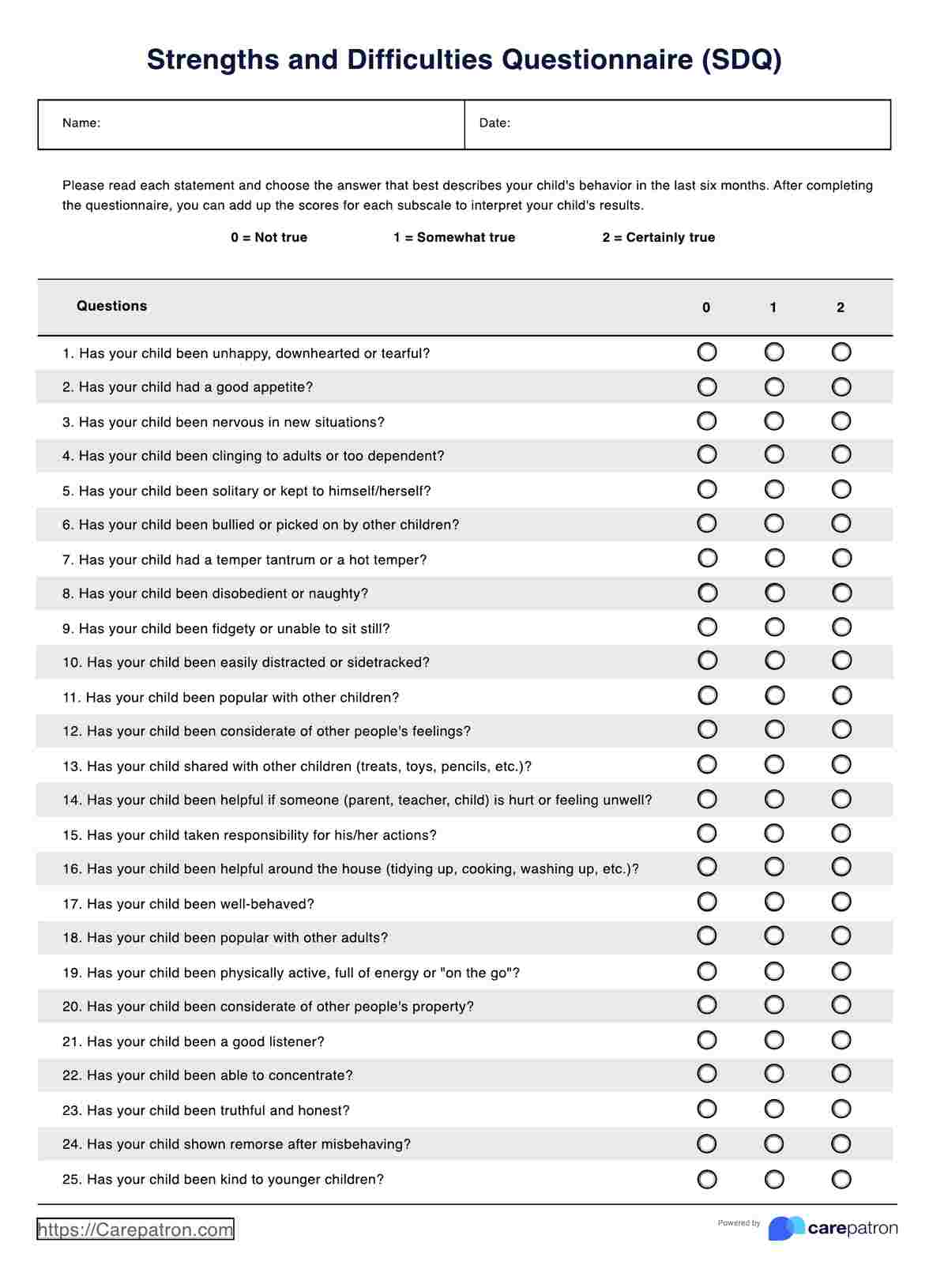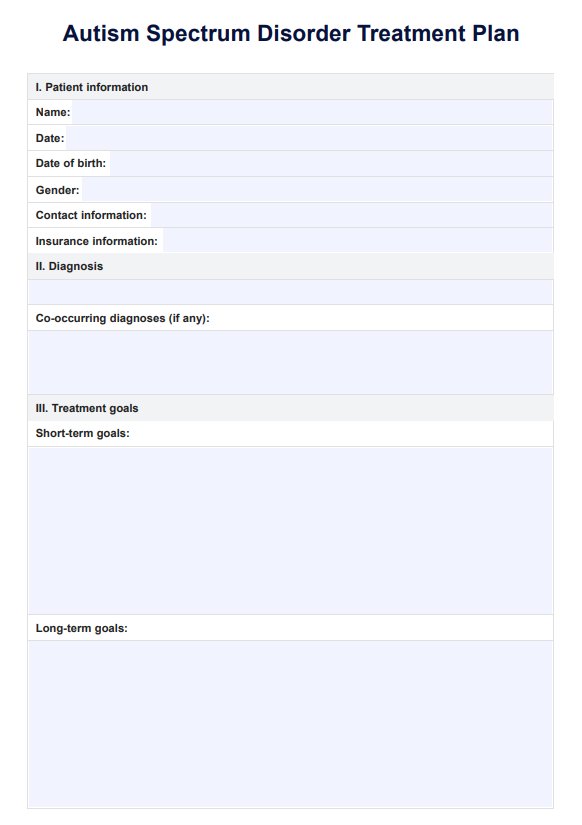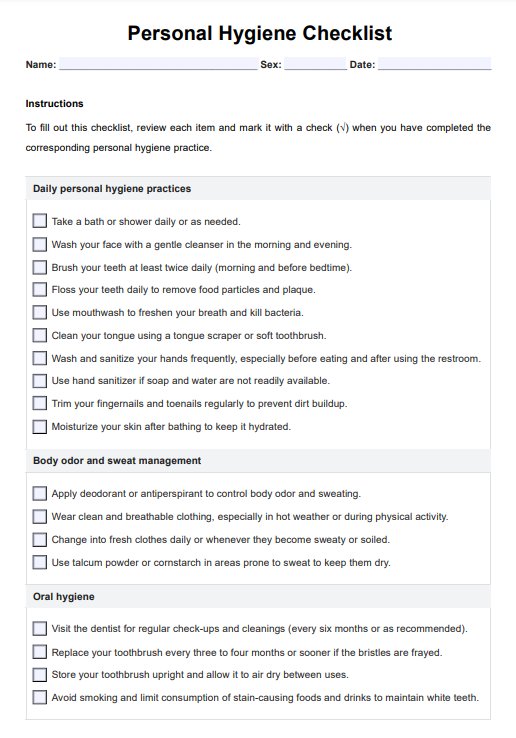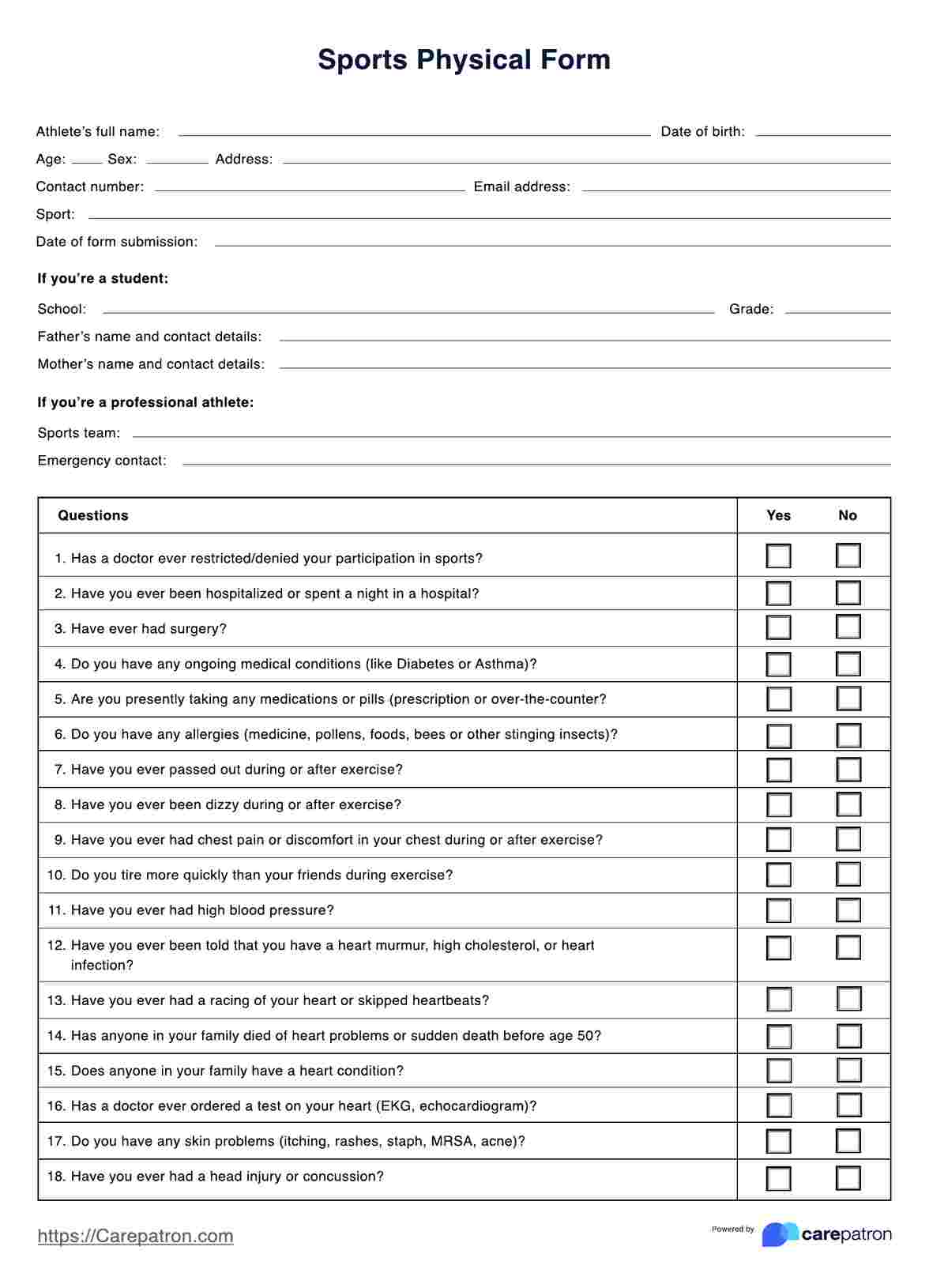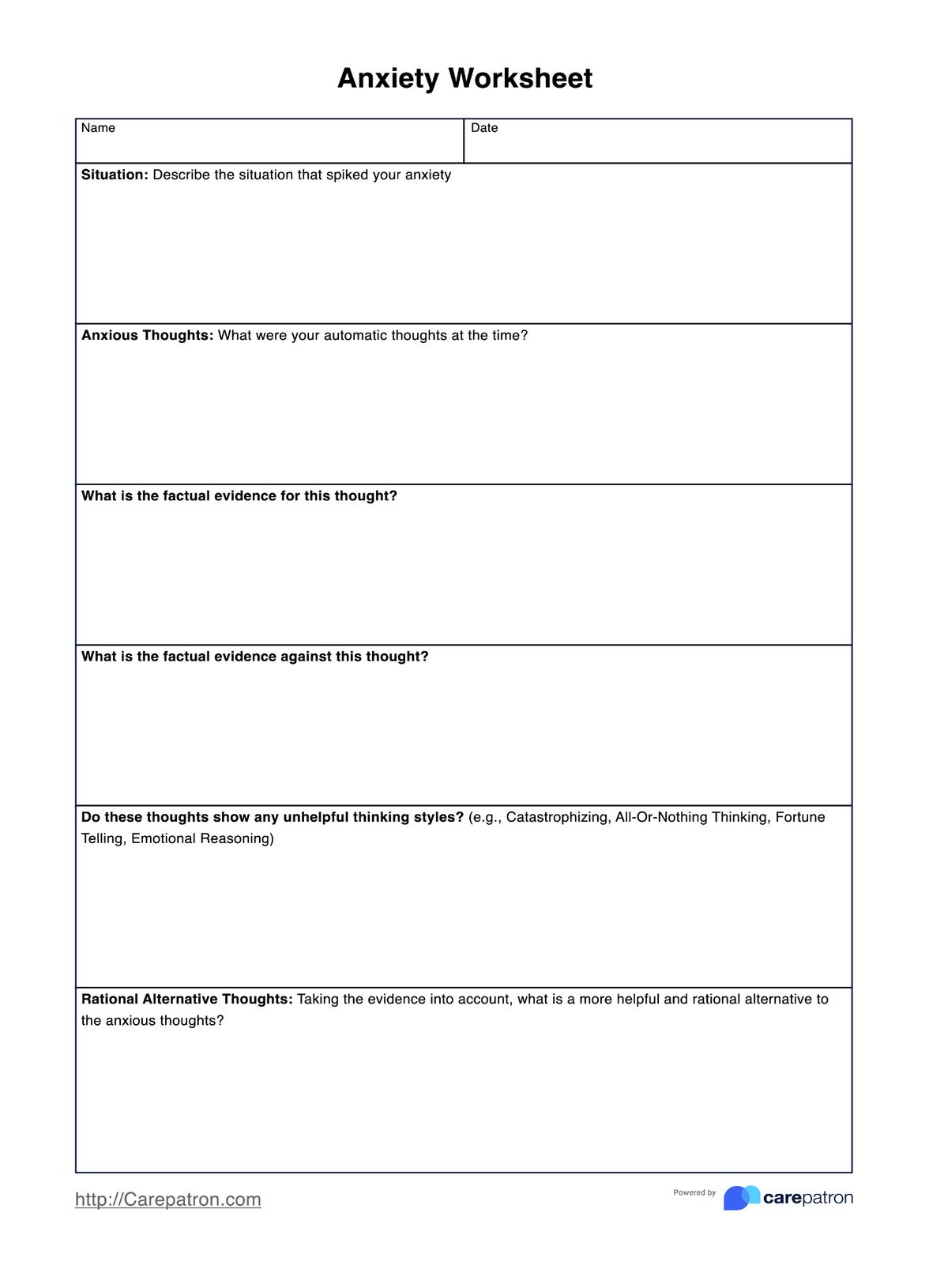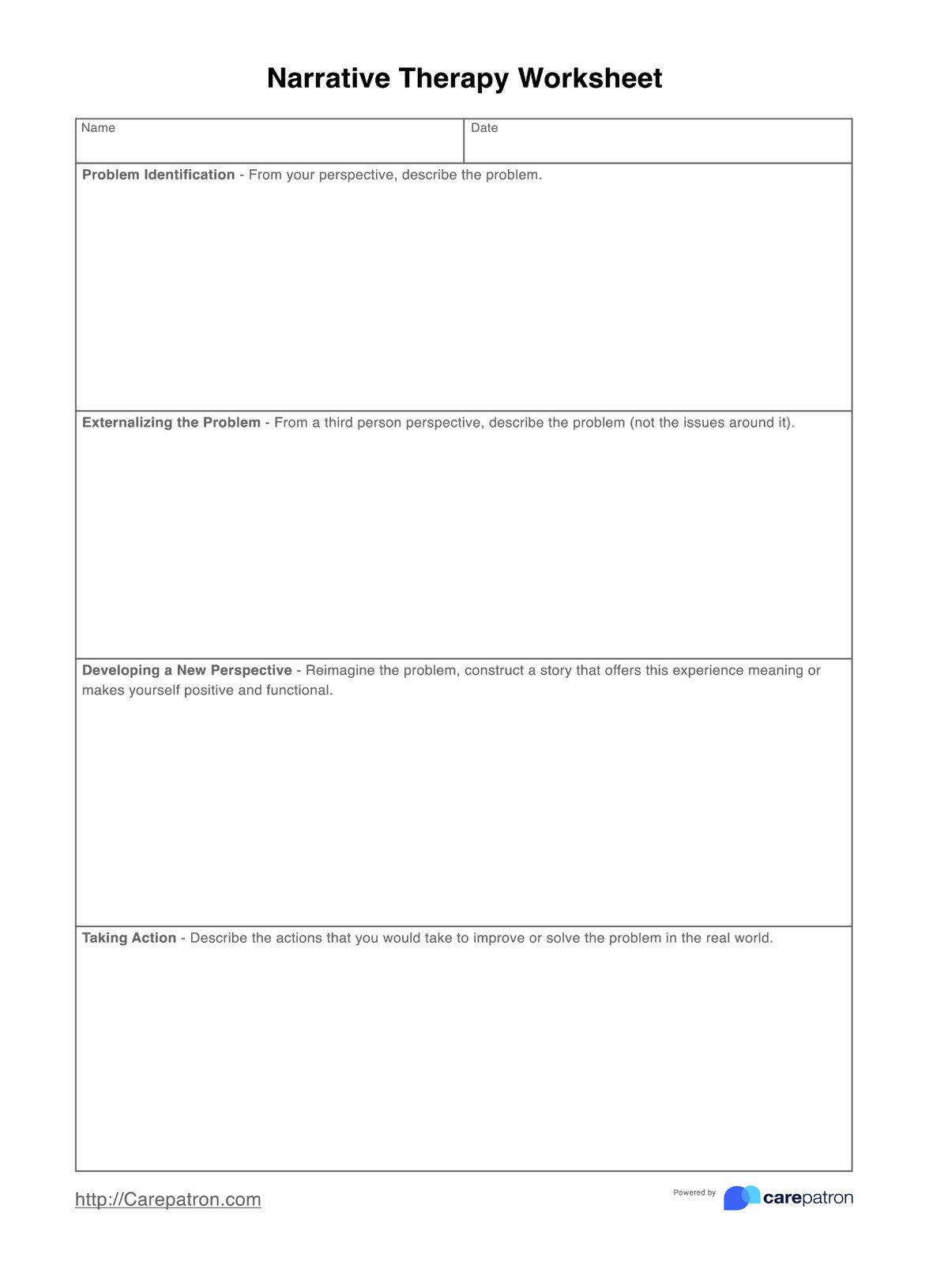Bullying Worksheet
Useful Bullying Worksheet PDF to provide essential insights, assessment queries, and recommended tactics to help combat bullying.


What is a Bullying Worksheet?
Bullying is a pervasive issue that can have detrimental effects on the mental, emotional, and physical well-being of the individuals involved. Addressing bullying through resources like worksheets is essential in creating awareness, prevention, and fostering a supportive environment for all.
A bullying worksheet is a valuable resource designed to help students understand, identify, and address the issue of bullying. It typically takes the form of a document or set of questions that serve as a tool for education and reflection. These worksheets can be utilized in various settings, such as schools, counseling centers, and youth groups, to supplement anti-bullying programs or as an independent resource.
The main objective of a bullying worksheet is to educate students about different types of bullying, including physical, verbal, emotional, and social forms. By providing descriptions and examples, the worksheet helps students recognize the signs and behaviors associated with bullying. This understanding is essential for empowering students to identify bullying situations accurately, both as victims and as bystanders.
Another significant aspect of anti bullying worksheets is the development of strategies for dealing with bullying. These worksheets provide activities and exercises that enable students to explore various coping mechanisms and assertive communication skills. By engaging in these activities, students can learn how to respond effectively to bullying situations and develop resilience.
Bullying Worksheet Template
Bullying Worksheet Example
How does it work?
Using printable bullying worksheets involves the following steps:
Step 1: Access the Printable Bullying Worksheets
Begin by obtaining the printable bullying worksheets. Our downloadable bullying worksheets at Carepatron are customizable and comprehensive.
Step 2: Introduce the Topic and Purpose
Before diving into the worksheets, introduce the topic of bullying to the students. Explain the purpose of the worksheets, emphasizing that they are designed to help them understand, identify, and address bullying situations.
Step 3: Learn about Different Types of Bullying
Guide students through the worksheets to learn about the various types of bullying, including physical, verbal, emotional, and social bullying. Use descriptions, examples, and scenarios to facilitate understanding and recognition.
Step 4: Identify Signs and Indicators
Engage students in activities that focus on identifying signs of bullying. The worksheets may include questions or checklists to help students recognize common signs such as changes in behavior, withdrawal, or unexplained injuries.
Step 5: Develop Strategies for Dealing with Bullying
Guide students through exercises aimed at developing effective strategies for dealing with bullying situations. This may involve role-playing, discussing assertive communication techniques, and exploring ways to seek support from trusted adults or authorities.
Step 6: Emphasize the Importance of Reporting
Highlight the significance of reporting bullying incidents to appropriate individuals or authorities. The worksheets may provide guidance on how to report bullying and whom to approach for help.
Step 7: Encourage Reflection and Discussion
Allocate time for students to reflect on their experiences and feelings related to bullying. Use the worksheets as a tool for guided reflection and facilitate open discussions to promote empathy, understanding, and a supportive classroom environment.
Step 8: Provide Additional Resources
Conclude the session by sharing additional resources such as helpline numbers, anti-bullying websites, or support groups that students can access for further assistance.
When would you use this Template?
Bullying worksheets serve various purposes in education, prevention, intervention, and research. In an educational context, these worksheets raise awareness about bullying by providing information on different types of bullying, signs to watch for, and available resources for support.
In terms of prevention, bullying worksheets guide individuals in recognizing early signs of bullying and promoting healthy relationships. They help students develop empathy, assertiveness, and conflict-resolution skills, fostering a positive and inclusive school environment.
During the intervention, these worksheets become valuable tools for counselors, therapists, or social workers working with victims of bullying. They assist in assessing the victim's situation, creating personalized safety plans, and facilitating access to appropriate support services. By engaging with the worksheets, victims can gain a better understanding of their experiences, explore coping strategies, and regain a sense of empowerment.
Moreover, bullying worksheets contribute to research efforts by collecting data on the prevalence of bullying, identifying risk factors, and assessing the impact on victims. Researchers can use these worksheets to gather information, analyze trends, and inform policies and interventions to prevent and address bullying effectively.
For instance, a teacher can use bullying worksheets to educate students about different types of bullying and facilitate classroom discussions on respectful behavior. A social worker can help a victim of bullying assess their safety, create a plan to address the situation and connect them with appropriate support resources. Researchers can utilize bullying worksheets to survey students or collect data on bullying incidents within a particular community or school.
Benefits
Free Bullying Worksheets offer several benefits for both educators and students. Here are some of the advantages of using these worksheets:
Facilitates awareness and understanding
Bullying worksheets help raise awareness about bullying and its various forms. They provide information about the different types of bullying, signs to watch out for, and the impact it can have on individuals. By using the worksheets, students can gain a deeper understanding of bullying, its consequences, and the importance of addressing it.
Promotes identification and avoidance of abusive behavior
Bullying worksheets empower students to recognize and avoid abusive behaviors. They provide examples and scenarios that help students identify bullying situations and understand the impact on the victims. By using the worksheets, students can develop the knowledge and skills to identify and prevent bullying in their schools and communities.
Empowers victims to seek support
Bullying worksheets guide students who have experienced bullying in assessing their situations, developing safety plans, and accessing support. They provide strategies for students to protect themselves, seek help from trusted adults, and connect with available resources. The worksheets empower victims to take action and reach out for support, promoting their well-being and resilience.
Gathers data for effective programs and policies
Free Bullying Worksheets can be used to collect data related to bullying incidents and prevalence. This data is valuable for developing evidence-based programs, policies, and interventions aimed at preventing bullying and supporting victims. Using the worksheets, educators, and researchers can gather insights into the nature and extent of bullying, identifying trends and areas requiring targeted intervention.
Enhances communication and dialogue
Bullying worksheets create a structured framework for discussions about bullying. They provide prompts, questions, and activities that facilitate meaningful conversations among students, educators, and counselors. The worksheets foster open dialogue, empathy, and understanding, creating a safe space for students to share their experiences and concerns.
Promotes proactive intervention
By using bullying worksheets, educators can take a proactive approach to address bullying in their classrooms and schools. The worksheets provide strategies and resources for educators to intervene effectively, promote positive behavior, and create a supportive learning environment.
Research & Evidence
Bullying worksheets have a history spanning several decades and have gained popularity in recent years due to increased awareness of bullying. The growing body of research and evidence supports the effectiveness of these worksheets in preventing and addressing bullying.
One early study conducted in 1993 by researchers at the University of California, Los Angeles, explored the impact of bullying worksheets on students' knowledge and response to bullying. The study revealed that students who completed the worksheets demonstrated a better understanding of bullying definitions, identified different types of bullying, and exhibited enhanced skills in dealing with bullying incidents.
A more recent study conducted in 2016 by researchers at the University of Texas at Austin investigated the effectiveness of bullying worksheets in reducing bullying behavior. The findings indicated that students who engaged with the worksheets showed a decreased likelihood of being bullied themselves and were less likely to engage in bullying behaviors toward others.
Apart from formal research studies, there is a wealth of anecdotal evidence supporting the use of bullying worksheets. Many teachers and school counselors have reported positive outcomes when incorporating these worksheets into their anti-bullying programs. They have found that worksheets facilitate student learning about bullying, provide practical strategies for addressing bullying incidents, and encourage open discussions in a safe and supportive environment.
References
Rigby, K., & Slee, P. T. (1993). The effectiveness of an anti-bullying intervention in an Australian secondary school. Journal of Social Psychology, 133(1), 71-80.
Espelage, D. L., Holt, M. K., & Henkel, R. R. (2016). Can bullying prevention worksheets reduce bullying behavior? A randomized controlled trial. School Psychology Quarterly, 31(4), 364-378.
Commonly asked questions
Teachers, school counselors, parents, and students benefit from a comprehensive bullying worksheet. They aid in educating students about bullying, developing coping mechanisms, and understanding its consequences. These worksheets provide a safe space for discussions and help promote effective strategies for addressing bullying.
Utilized in different situations, these worksheets are useful when incorporated into anti-bullying curricula to educate students about bullying and its resolution. They also assist students who are being bullied in developing coping mechanisms and comprehending the consequences of bullying.
They are introduced to participants, who then complete the worksheet at their own pace.
Facilitators provide support during the process, and afterward, a debriefing session allows for further discussion and reinforcement of key concepts.


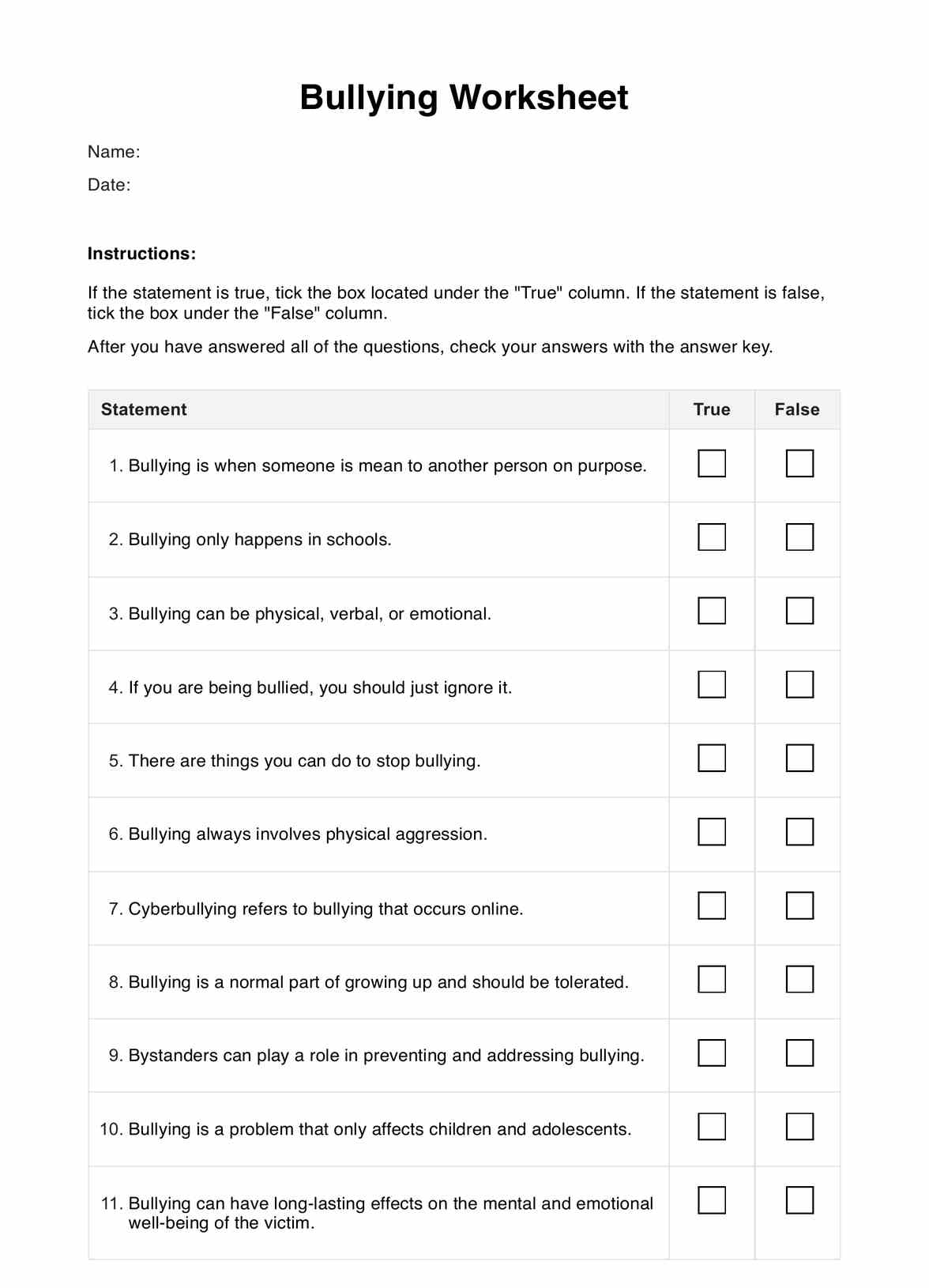
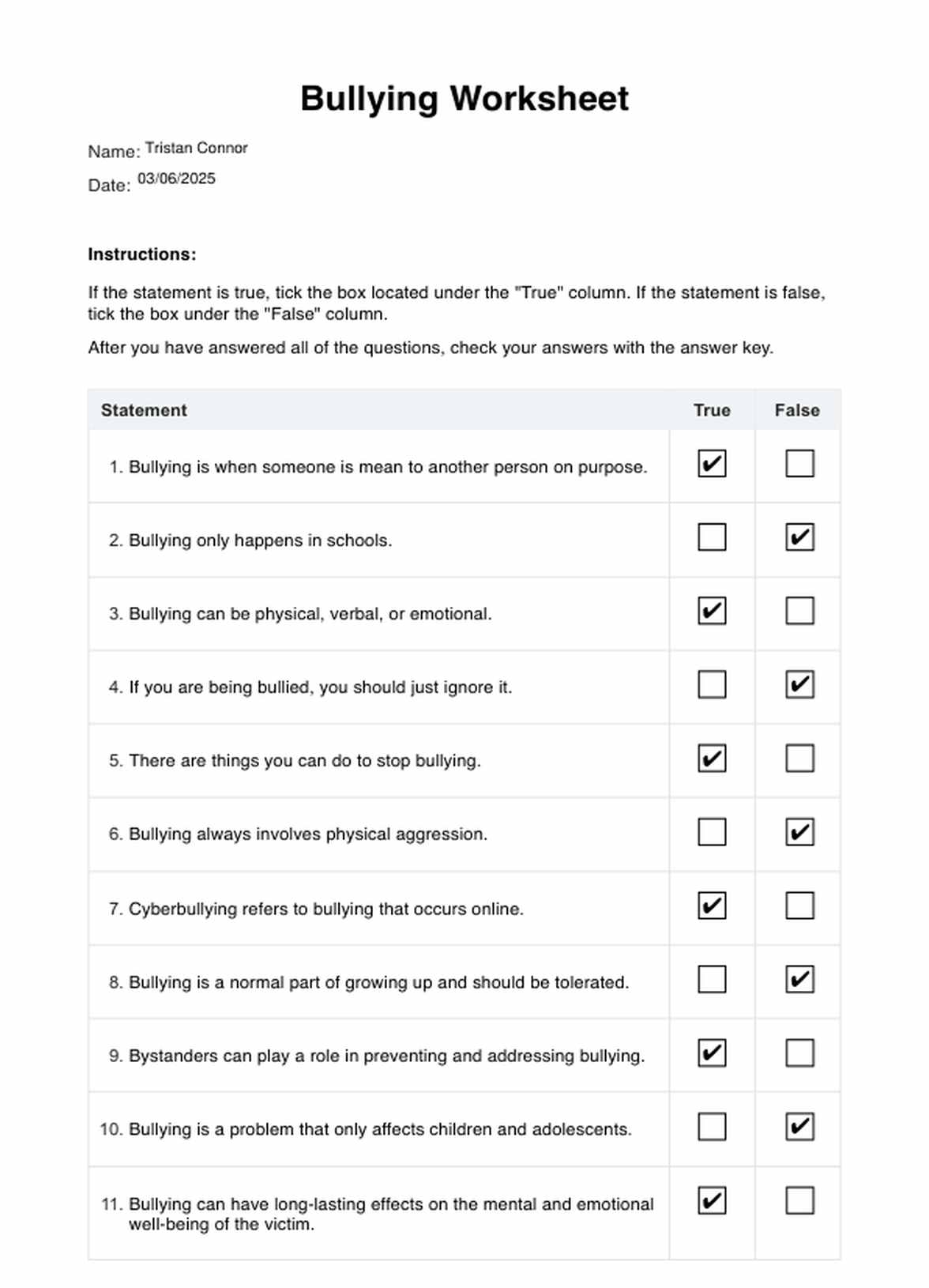

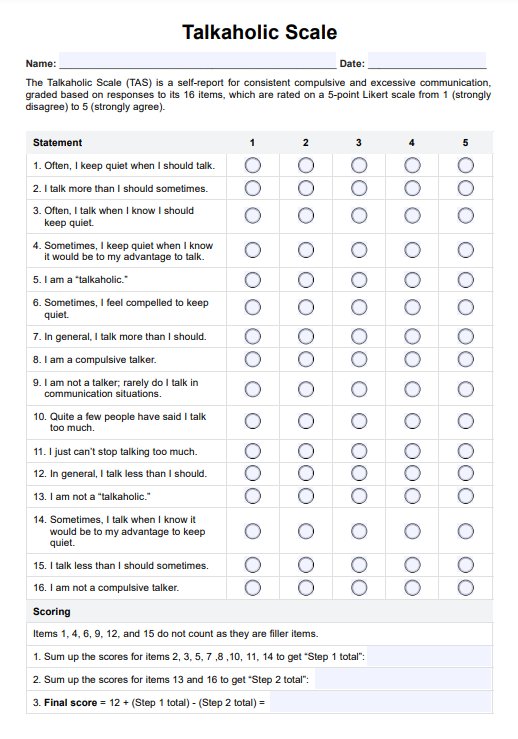
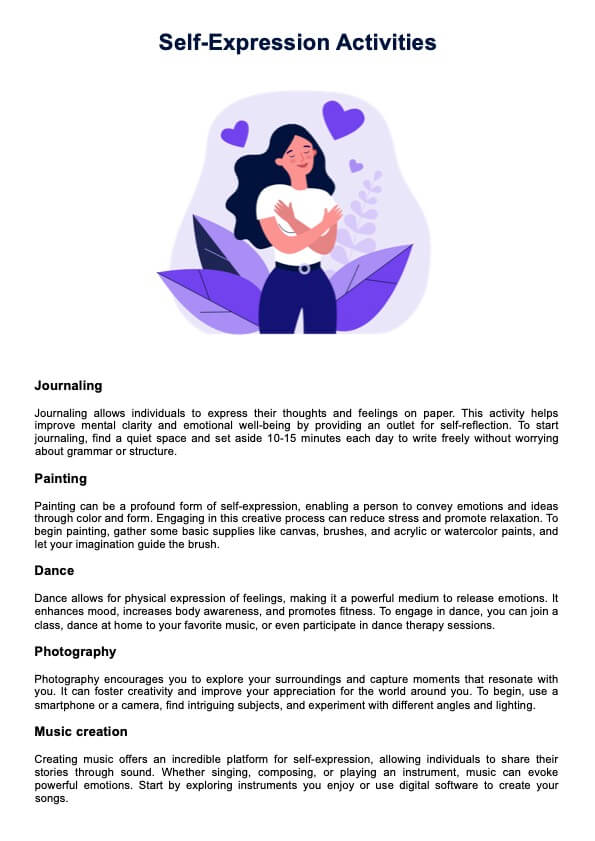
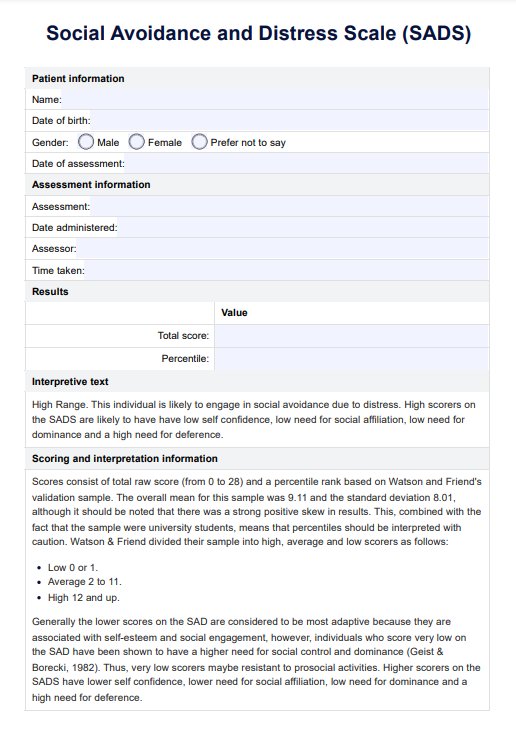









-template.jpg)












































































